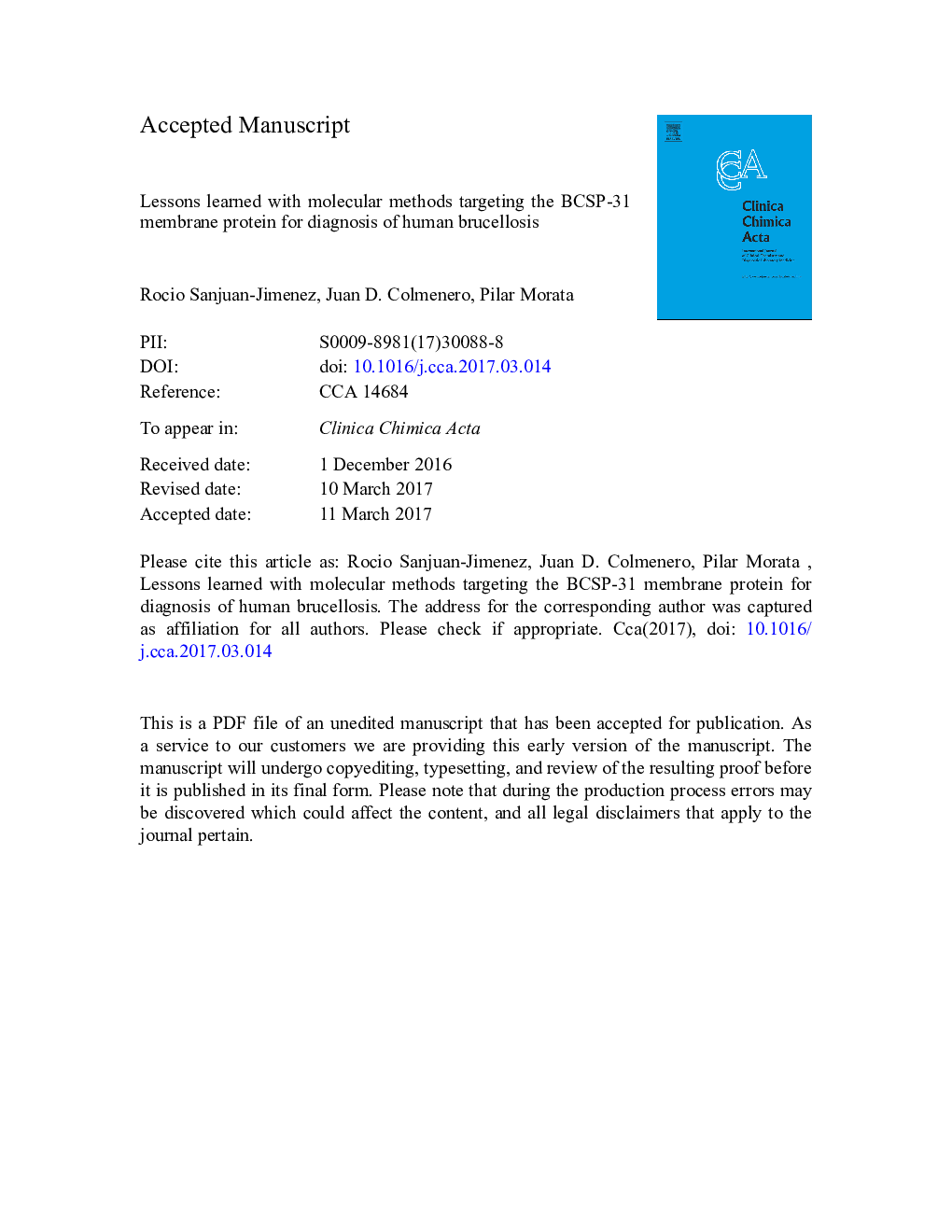| Article ID | Journal | Published Year | Pages | File Type |
|---|---|---|---|---|
| 5509693 | Clinica Chimica Acta | 2017 | 34 Pages |
Abstract
Brucellosis remains an emerging and re-emerging zoonosis worldwide causing high human morbidity. It usually affects persons who are permanently exposed to fastidious microorganisms of the Brucella genus and has a nonspecific clinical picture. Thus, diagnosis of brucellosis can sometimes be difficult. Molecular techniques have recently been found very useful in the diagnosis of brucellosis together with its common and very diverse focal complications. We herein review all the lessons learned by our group concerning the molecular diagnosis of human brucellosis over the last twenty years. The results, initially using one-step conventional PCR, later PCR-ELISA and more recently real-time PCR, using both fluorescent intercalating reagents (SYBR-Green I) and specific probes (Taqman), have shown that these techniques are all much more sensitive than bacteriological methods and more specific than the usual serological techniques for the diagnosis of primary infection, the post-treatment control of the disease, early detection of relapse and the diagnosis of focal complications. Optimization of the technique and improvements introduced over the years show that molecular methods, currently accessible for most clinical laboratories, enable easy rapid diagnosis of brucellosis at the same time as they avoid any risk to laboratory personnel while handling live Brucella spp.
Related Topics
Life Sciences
Biochemistry, Genetics and Molecular Biology
Biochemistry
Authors
Rocio Sanjuan-Jimenez, Juan D. Colmenero, Pilar Morata,
